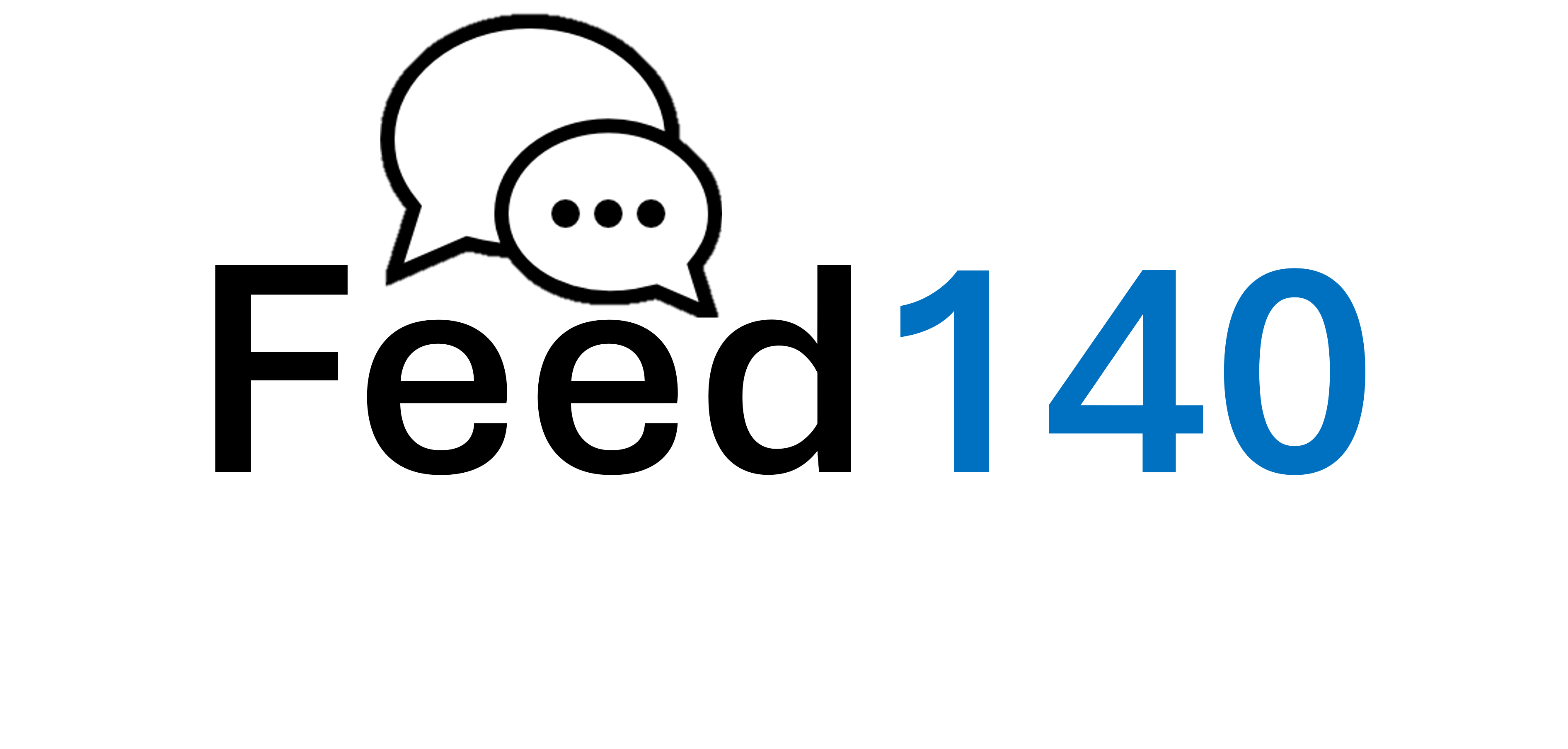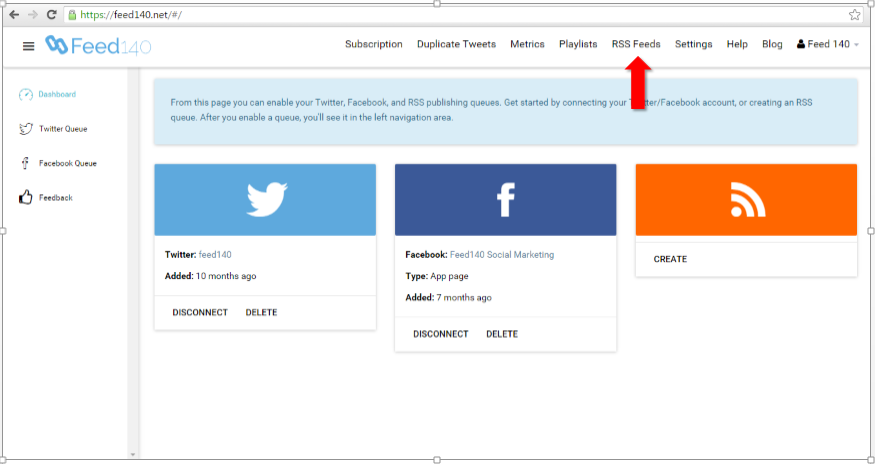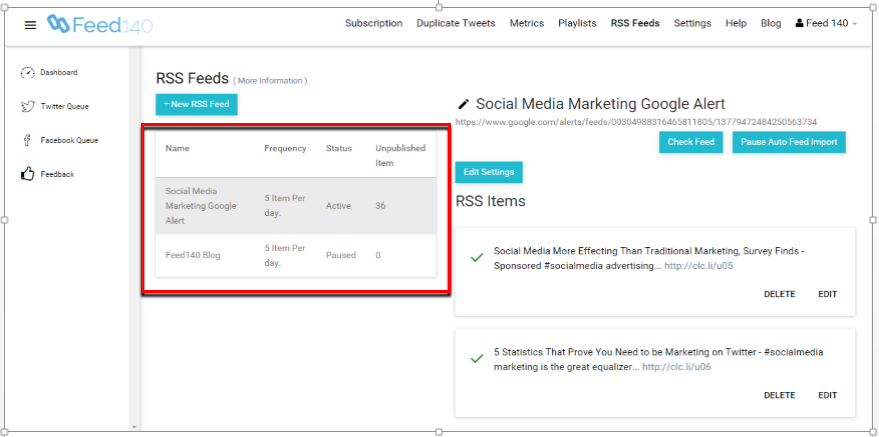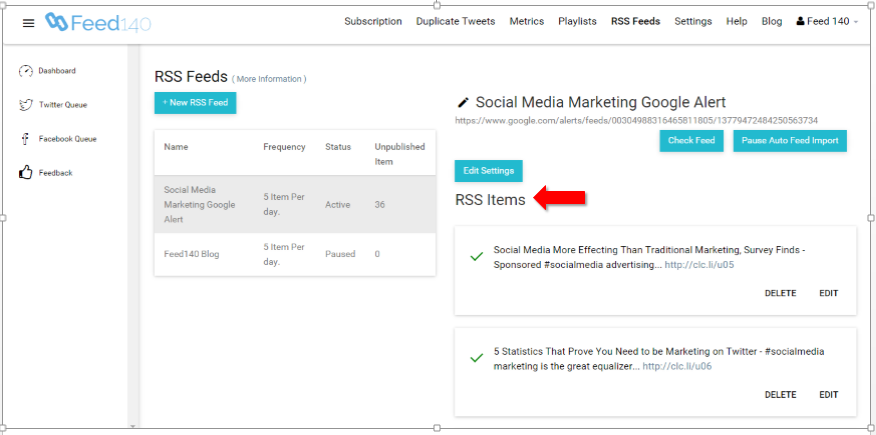This is part 3 of a series. If you are new to the series, please start here: Content Curation with Feed140: Part 1, Strategy and Overview
In this process, we will use the Feed140 platform to curate incoming RSS Feeds. On a daily basis, we will review all of the new items that have come in from the feeds and either curate them for publication, or delete them.
We are aiming for a good balance between quality and efficiency. Feed140 helps eliminate a lot of steps and after you go through the process a few times, you will find that it does not take much time.
Quick Summary
Key Points
- Find the most informative and interesting content as possible through the Feed140 RSS feeds feature
- Review, edit and approve items to match specific content guidelines
- Engage with publishers and readers by leaving a comment on your curated articles
Tasks for Part 3
- Review RSS item content for quality and relevance and delete unwanted items.
- Edit the items before publication. We want to make sure the item is the best it in can be.
- Comment on curated items.
The content of this post is also available as a PDF to make it easy to share with your team.
Content Curation With Feed140 Part 3 Process of Curating Feeds
Overview via SlideShare
In the previous step you should have set up at least two incoming Feeds. In this example we will use the ‘social media marketing’ Google alert RSS feed we created for ourselves.
Follow these steps to efficiently curate the ‘rough draft’ content from your feed.
1. Login to your Feed140 account and go to the RSS Feeds section
2. Click on one of the RSS feeds.
3. Review RSS Item Content For Quality and Relevance and Delete Unwanted Items
This is the most important step of all because in it we will decide what content we share with our followers and what content we delete. We always want to aim as high as possible in terms of quality and value. We are making a contract with our followers… “Follow us and we will share helpful and interesting content with you” – so the quality of the content we share is everything in terms of our social marketing success.
Follow the link in each feed item to review the article…
Take your time and go deep in terms of finding the best content to share. Over time, you will become an expert in this content area because you will be reading and curating on a daily basis! Curating content is more ‘art’ than ‘science’ but the guidelines below will help guide your content decisions.
Ultimately, we want our users to not only click and read, but to also share, re-tweet, like, etc. our social posts, so attention-getting headlines and topics are important. Here are some questions you can ask yourselves when choosing the best content.
- Is it on-topic?
- Is it helpful, informative and interesting?
- Is it not a blatant advertisement?
- Is it from a credible source?
- Do they allow commenting?
- Is it presented in a professional way? (not tons of ads, or forced opt-in or subscription to view content)
- Is there something better in the RSS list than this one?
- Is this the original source? (if not, follow any links or references provided to find and possibly curate the original source)
- Is it related to a trending or hot topic/hashtag that will give us wave to ride?
On a daily basis we want to curate at least 5 but no more than 7 items from our various RSS feeds, so the process involves a lot of elimination and deletion to get a handful of shareable items.
Important: Do not let old items build up in the RSS feeds. Make sure you delete unwanted items and only leave the few that you want to curate. The list should always be updated with fresh content.
We recommend that you have 3-10 un-checked items left that are ready for the rest of the curation process. There will be instances that you will also have several checked items waiting to be published. These will be published based on the settings for the feed in your Feed140 account, so just leave them checked. It is advisable to have some degree of ‘backlog’ of curated items for each feed for content distribution purposes.
4. Edit Items and Approve Items
Each item should be edited before you approve it for publication. Remember, our goal is quality, so we want to spend some extra time in making sure that the content of the item is the best it can be. Click the ‘Edit’ link next to the feed item to edit it using the following guidelines…
- Edit the content of the item to make it interesting and informative on it’s own.
- Give our followers a complete concept, not just a partial sentence
- Try to sum up the essence of the content item (as a good headline will do)
- Sometimes it’s good to extract a relevant bit of content from the article, like a certain fact or point
- Keep the total length, with link to under 130 characters (to allow for re-tweets without editing)
- Incorporate one or more hashtags from our list
- If the original item is not the original source, change the link to point to the original source
When you are done editing an item, check the box to the left of the feed item to approve it for publication.
5. Comment on checked items
Engage with the publisher of the article and viewers through commenting (if they allow comments). It helps you get more mileage out of your interaction. Let your presence felt by writing a simple statement. Don’t just say “great article”. Assert a little effort by mentioning important highlights of the article and share your opinions about it. Help them to know that you actually read the article. It’s about writing a thoughtful comment while adding value to the conversation.
The comments do not have to be brilliant, but they must be respectful, polite, and spelled correctly. Use proper grammar and add value to the post in some way. Keep in mind that, for most bloggers, just getting comments and shares adds value to their post. If the comment highlights something particularly helpful about their post, or enhances their point in some way, take advantage of it. Consistent commenting increases web presence and traffic.
Assignment
- Implement the process above every weekday for at least a week.
- You may find that a different schedule fits your needs, but in the beginning a daily schedule helps make sure you lock in the process. The key is making a regular and consistent schedule.
The content of this post is also available as a PDF to make it easy to share with your team.
Content Curation With Feed140 Part 3 Process of Curating Feeds
Navigation
Previous Part: Content Curation With Feed140: Part 2, Setting Up Your Inbound RSS Feeds
Next Part: Content Curation With Feed140: Part 4, Making Blog Posts Out of Curated Items







